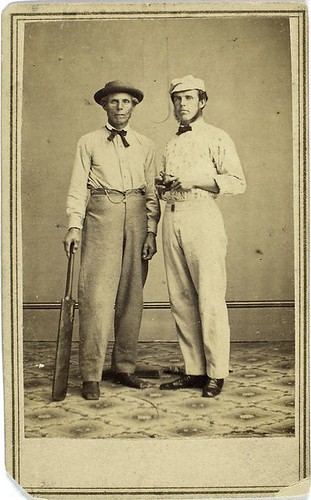Time having spun away from me lately, we are going again in three chapters to finish this book and move on to Weaver on Strategy. I hope I am not doing Peter Morris' book a disservice as this almost actually resembled a book club last time when a comment was fielded. Let's get exponential!
But Didn't We Have Fun? An Informal History of Baseball's Pioneer Era 1843-1870
by Peter Morris
Chapter: 1 | 2 | 3 | 4 | 5 | 6, 7, 8 | 9, 10, 11 | 12 | 13
 |
| Yes, Harry Wright started out with Cricket |
It has often been said, incorrectly, that the Civil War was a boon for baseball. That Abner Doubleday and others used Union camps to teach and play baseball. That this caused a great dispersion of the game and sent it to all corners of the United States. From this book, we learn that baseball was alive, well, and thriving throughout from just below the Mason Dixon line and northward (I am unsure why the South is so little mentioned in this book and find it strange that baseball was not being playing to a greater degree in some of the larger towns in the South). We also learn that there is no evidence that Doubleday ever had an interest or was aware of the game.
What the Civil War did though was resulted in the mass enlistment of young men that depleted the ranks of baseball clubs, causing the majority of them to shut down or merge with the remnants of other teams. Larger cities could cope and play games between the couple of clubs left, but small cities and towns stopped seeing highly organized games. The war not only led to enlistment of young men, but the mass crippling and slaughter of those young men. This made it difficult for towns to put teams together during and in the aftermath of the war. It likely also caused many a good and dedicated player to move from those smaller towns to larger ones. Combine that with the advent of the train and migration becomes far easier. Baseball was ceasing as a community club and turning into a business in and of its own.
Chapter 10: Competitiveness and Professionalism, and What they Wrought, The End of an Era, part II
As cities grew, baseball playing fields became fewer and of poorer quality. However, throngs of spectators would attend these games. This made for a ripe environment for business ventures to emerge. An entity would build enclosed baseball stadiums and sign agreements for teams to make the stadium their home field. This arrangement often had no money being exchanged. In turn, the owners of the ball park would then charge admission to spectators who chose to attend these games. This inevitably led to the ball players becoming irritated at having money made off of them, so agreements were then made to pay the players.
This meant that for your team to be successful, you need to have revenue streams. Players were now being regularly paid to play which hurt smaller towns who did not have the revenue streams to build stadiums and then pay their players. The good ones migrated to areas where the could be paid to play. Even cities as large as Philadelphia did not have a large enough market for these things to occur, which resulted in many ball players migrated to New York, Cincinnati, and Washington DC.
Washington DC had revenue for a ball club, the Washington Nationals, because it grifted money from the federal government. Players were given solid government jobs that were primarily located in the treasury department. This enabled the team to spend large sums on their players and also fund train travel throughout the United States for barn storming ventures.
Chapter 11: The Cincinnati Base Ball Club and the Red Stockings
The Cincinnati Base Ball Club was basically the final nail in the coffin for the long term viability of baseball being a successful amateur game. The city was successful and did not need much advertisement, so the club did not truly operate as ambassadors for the city. Instead, they became the cities desired reflection. The direction of the club was not outward, but inward. The team was based on civic pride. Civic pride is often competitive and so the team as a reflection of the city also needed to be competitive, so it made sense for the base ball club to become one of the first clubs to be completely made up of paid professional players with nearly all of them not from Cincinnati.
The team ran out the slate in 1869 undefeated. They were the darling of Cincinnati and a beacon for the city. However, with the coming of openly professional players in 1869, Cincinnati team was basically practicing Moneyball. The inefficiency in the market in 1869 were ball players who got paid. By 1870, Cincinnati's Moneyball scheme became simply baseball. They lost several games and were eventually disbanded as the non-native club began to disgrace the city on and off the field. No doubt, the losing on the field was the main issue, but players did things such as walk into saloons while wearing their uniform. This was strictly frowned upon.
Thus, the Cincinnati Base Ball Club shut down their experiment with professionalism. Harry Wright and the Red Stockings reconstituted their team in Boston wearing the same exact uniforms. This eventually led to a slight change in the name to Red Sox. Professionalism could not be done away with, but rather merely move around to where it was more acceptable and profitable. In a period of about two decades, the game shifted from serving as a municipality's diplomatic arm to an inward focused expression of civic pride to a simple capitalistic venture in civic pride's clothing.
Next up . . . the evolution of the game to a strong undercurrent of 'Muffin Ball.'
No comments:
Post a Comment